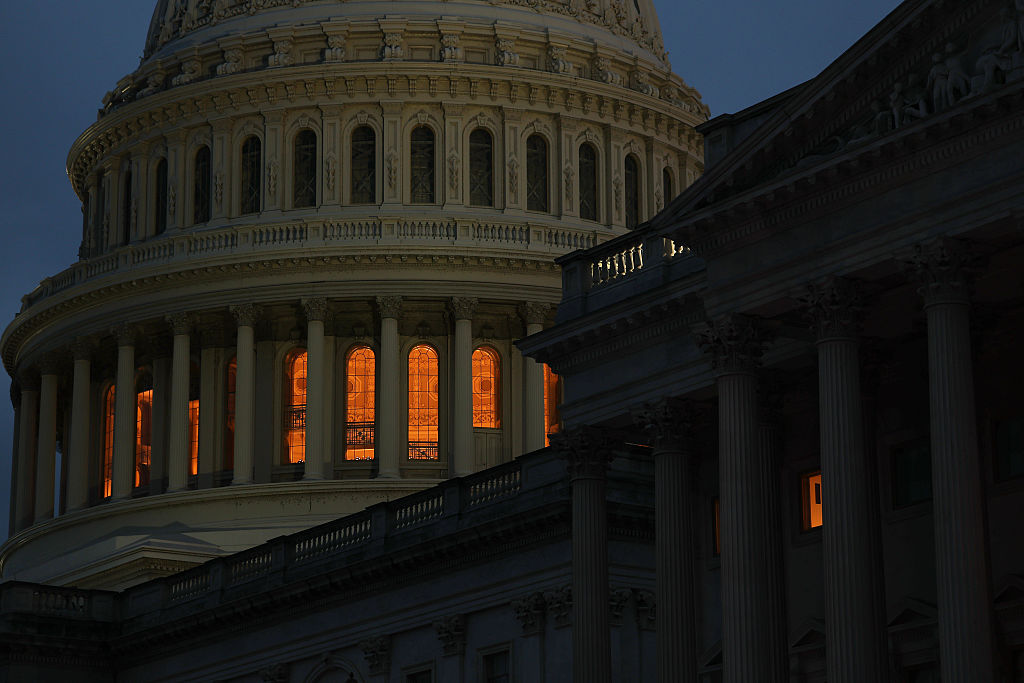Government Shutdown to Delay Data, Including Key Jobs Report
While government shutdowns typically don't impact stock returns, they can delay the release of key economic data – including the monthly jobs report.


The government officially shut down at 12:01 am Eastern Standard Time on Wednesday, October 1. The shutdown will likely spark short-term volatility in the equity market. But past shutdowns have had little to no long-term impact on stock returns.
The more pressing issue for investors is the delay of economic data, which, depending on how long the shutdown wears on, could have a direct effect on the Federal Reserve's rate-cutting plans.
For those wondering, the next Fed meeting, slated for October 28-29, will still go on as scheduled even if the shutdown continues through the end of the month. The Fed is an independent agency and is not impacted by the lapse in funding.
From just $107.88 $24.99 for Kiplinger Personal Finance
Become a smarter, better informed investor. Subscribe from just $107.88 $24.99, plus get up to 4 Special Issues

Sign up for Kiplinger’s Free Newsletters
Profit and prosper with the best of expert advice on investing, taxes, retirement, personal finance and more - straight to your e-mail.
Profit and prosper with the best of expert advice - straight to your e-mail.
But, "the suspension of economic statistical releases will make it harder to track the state of the economy during the shutdown," says Bill Adams, chief economist at Comerica Bank. "That may cause financial markets to react more than usual to private data releases," including this morning's release of ADP private payrolls.
Ahead of the opening bell on Wednesday, October 1, ADP said private employers shed 32,000 jobs in September, missing economists' estimates for the addition of 45,000 new positions.
"This was the weakest result in over two years and the first back-to-back declines since the pandemic," says Sal Guatieri, senior economist at BMO Capital Markets, adding that "businesses are just not in a hiring mood."
The September jobs report is unlikely to be released this Friday
On this week's economic calendar, the September jobs report was scheduled to be released ahead of the open on Friday, October 3. Barring a quick funding resolution, the data will likely be delayed.
According to a contingency plan released by the Department of Labor, the Bureau of Labor Statistics, which publishes key economic reports including data on employment, inflation and productivity, "will completely cease operations" during the shutdown.
The Labor Department also notes that economic data "scheduled to be released during the lapse will not be released" and that "all active data collection activities for BLS surveys will cease."
What other data will be impacted by the government shutdown?
Other data releases that could be impacted by an ongoing government shutdown include:
- Construction spending (August data was due October 1)
- Initial jobless claims (weekly data released every Thursday morning)
- Factory orders (August data was due October 2)
- Consumer Price Index (September data is due October 15)
- Producer Price Index (September data is due October 16)
- Retail sales (September data is due October 16)
- Building permits and housing starts (September data is due October 17)
- Import prices (September data is due October 17)
How will this impact investors?
As noted, government shutdowns have had a muted impact on long-term stock returns.
"Historically, markets were not materially impacted by a shutdown," says LPL Financial Chief Equity Strategist Jeff Buchbinder. "For example, in 2013, the government was shut down for 16 days during the first part of October. The S&P 500 had some down days but overall, the equity market took all the political drama in stride with a 3.1% advance during those 16 days."
That said, shutdowns – especially prolonged ones – can introduce an additional layer of uncertainty in markets.
As such, it is prudent for market participants to remember one of the most important rules of investing when volatility ramps up: don't panic. Investing in the market is a marathon and not a sprint. As we've said time and time again, wealth is built over decades, not days.
One way to protect portfolios against market volatility is to hedge with options – particularly put options – which can create a buffer against potential downside. And with the Cboe Volatility Index (VIX) still at relatively low levels, the cost to buy short-term options insurance isn't too expensive at the moment.
As for equities, investors can seek out traditional safety plays. These can include the best dividend stocks, which "tend to hold up better in market drawdowns," writes Kiplinger contributor Dan Burrows.
To spread risk out over a basket of stocks vs individual equities, investors can also seek out the best dividend growth ETFs or low-volatility ETFs.
Related content
Profit and prosper with the best of Kiplinger's advice on investing, taxes, retirement, personal finance and much more. Delivered daily. Enter your email in the box and click Sign Me Up.

With over a decade of experience writing about the stock market, Karee Venema is the senior investing editor at Kiplinger.com. She joined the publication in April 2021 after 10 years of working as an investing writer and columnist at a local investment research firm. In her previous role, Karee focused primarily on options trading, as well as technical, fundamental and sentiment analysis.
-
 'Humbug!' Say Consumers, Despite Hot GDP: Stock Market Today
'Humbug!' Say Consumers, Despite Hot GDP: Stock Market Today"The stock market is not the economy," they say, but both things are up. Yet one survey says people are still feeling down in the middle of this complex season.
-
 The SEC Is Concerned for Older Investors and Retirement Savers. Here's What You Should Know
The SEC Is Concerned for Older Investors and Retirement Savers. Here's What You Should KnowThe SEC focusing on older investors, retirement and college savers, and private securities. Here's how those changes impact you.
-
 Vesting, Catch-Ups and Roths: The 401(k) Knowledge Quiz
Vesting, Catch-Ups and Roths: The 401(k) Knowledge QuizQuiz Test your understanding of key 401(k) concepts with our quick quiz.
-
 'Humbug!' Say Consumers, Despite Hot GDP: Stock Market Today
'Humbug!' Say Consumers, Despite Hot GDP: Stock Market Today"The stock market is not the economy," they say, but both things are up. Yet one survey says people are still feeling down in the middle of this complex season.
-
 The SEC Is Concerned for Older Investors and Retirement Savers. Here's What You Should Know.
The SEC Is Concerned for Older Investors and Retirement Savers. Here's What You Should Know.The SEC focusing on older investors, retirement and college savers, and private securities. Here's how those changes impact you.
-
 Why You Should Pay Attention to Company Guidance
Why You Should Pay Attention to Company GuidanceUnderstanding how corporate profit forecasts affect analysts’ estimates and stock ratings can help you make investment decisions.
-
 How to Protect Yourself and Others From a Troubled Adult Child: A Lesson from Real Life
How to Protect Yourself and Others From a Troubled Adult Child: A Lesson from Real LifeThis case of a violent adult son whose parents are in denial is an example of the extreme risks some parents face if they neglect essential safety precautions.
-
 To Build Client Relationships That Last, Embrace Simplicity
To Build Client Relationships That Last, Embrace SimplicityAs more automation becomes the norm, you can distinguish yourself as a financial professional by using technology wisely and prioritizing personal touches.
-
 Client Demand Is Forcing Financial Advisers to Specialize: How to Deliver
Client Demand Is Forcing Financial Advisers to Specialize: How to DeliverThe complexity of wealthy clients' needs — combined with AI and consumer demand — suggests the future of financial planning belongs to specialized experts.
-
 Stocks Rise to the Spirit of the Season: Stock Market Today
Stocks Rise to the Spirit of the Season: Stock Market TodayInvestors, traders and speculators are beginning to like the looks of a potential year-end rally.
-
 A Financial Planner Takes a Deep Dive Into How Charitable Trusts Benefit You and Your Favorite Charities
A Financial Planner Takes a Deep Dive Into How Charitable Trusts Benefit You and Your Favorite CharitiesThese dual-purpose tools let affluent families combine philanthropic goals with advanced tax planning to generate income, reduce estate taxes and preserve wealth.